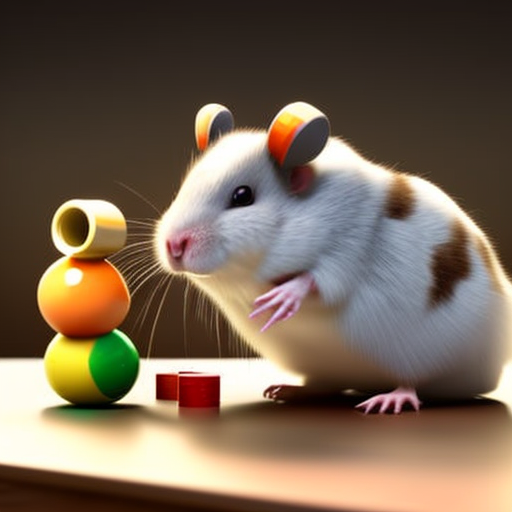Hamsters are often thought of as small, cute pets that are easy to take care of. However, did you know that hamsters also have an impressive memory? Studies have shown that hamsters are able to remember a variety of tasks and information for extended periods of time. This is particularly true for the Syrian hamster, which is the most commonly kept pet hamster.
In one study, researchers trained Syrian hamsters to navigate a maze. The hamsters were able to remember the correct path through the maze even after a month had passed. Another study found that hamsters are able to remember the location of food in a maze for up to two weeks.
But it’s not just spatial memory that hamsters excel at. They also have a good working memory, which is the ability to hold and manipulate information in your mind for a short period of time. For example, in one study, hamsters were able to remember a sequence of sounds and repeat them back correctly.
So why do hamsters have such good memory? One theory is that it’s related to their wild lifestyle. In the wild, hamsters need to remember the location of food and potential predators in order to survive. Their ability to remember information for long periods of time also helps them to store food for the winter.
The Science Behind a Hamster’s Memory
Hamsters possess a type of memory called spatial memory, which is the ability to remember and recall the location of objects and events in their environment. This type of memory is closely related to the hippocampus, a region in the brain responsible for spatial navigation. Studies have shown that the hippocampus of a hamster is well-developed, indicating that they possess a good spatial memory.
Additionally, hamsters also have a strong working memory, which refers to the ability to hold and manipulate information in the short-term. Studies have shown that hamsters have the ability to remember a series of events and even perform simple tasks such as finding their way through a maze. This type of memory is closely related to the prefrontal cortex, a region in the brain responsible for working memory.
How Hamsters Use Their Memory
Hamsters use their spatial memory to remember the location of food, water, and shelter in their environment. They use this memory to navigate through their cage or habitat, find food and water, and locate a safe place to rest. Also, wild hamsters use their spatial memory to navigate through their territory, locate food sources, and avoid predators. They remember the location of food sources and potential dangers that they have encountered in their territory.
Their working memory is used for more complex tasks such as solving food puzzles, navigating through mazes, and foraging for food. They can remember the location of food and how to access it, even after a period of time. This ability helps them to survive in the wild, where food sources may be scarce and unpredictable.
Memory Training for Pet Hamsters
Just like other pets, pet hamsters also benefit from memory training. One way to train their memory is through food puzzles, which are interactive toys that challenge the hamster to remember where the food is located and how to access it. These puzzles can include hiding food in different compartments or under various obstacles, and require the hamster to remember where the food is located and how to access it. This not only keeps the hamster mentally stimulated but also helps to keep their memory sharp.
Another way to train their memory is by creating a complex habitat. This can include multiple levels, hiding spots, and different textures to explore. This will encourage the hamster to remember where everything is and how to navigate through their environment. This can also help to prevent boredom and keep them mentally stimulated.
Final Words
In conclusion, a hamster’s memory is an impressive and adaptive feature that helps them to survive in the wild and thrive as pets. Their spatial memory allows them to remember the location of food, water, and shelter, while their working memory enables them to perform more complex tasks. Pet hamsters can also benefit from memory training through food puzzles and complex habitats. It’s important to note that a hamster’s memory is not only useful for survival, but also to keep them mentally stimulated and happy.
